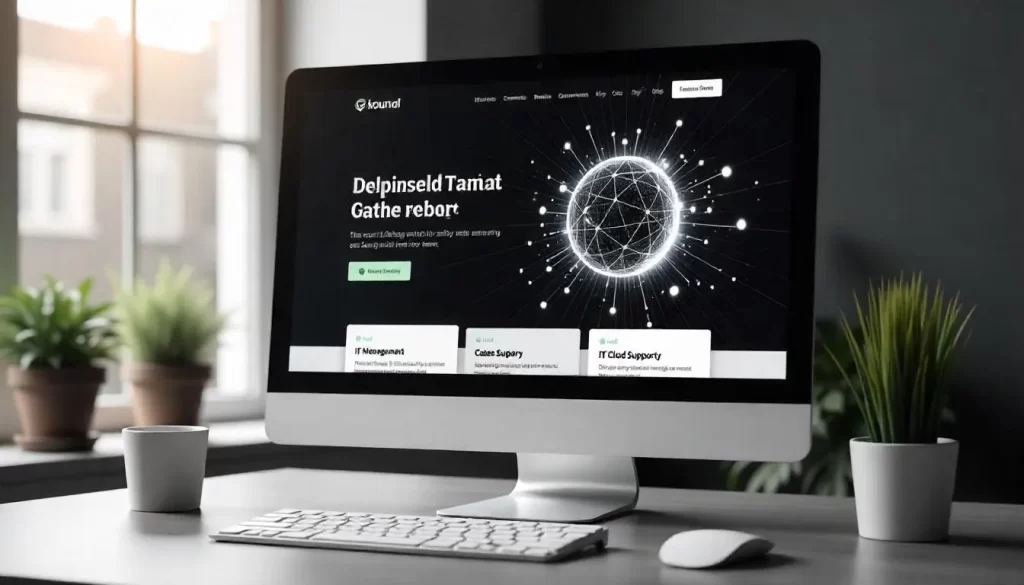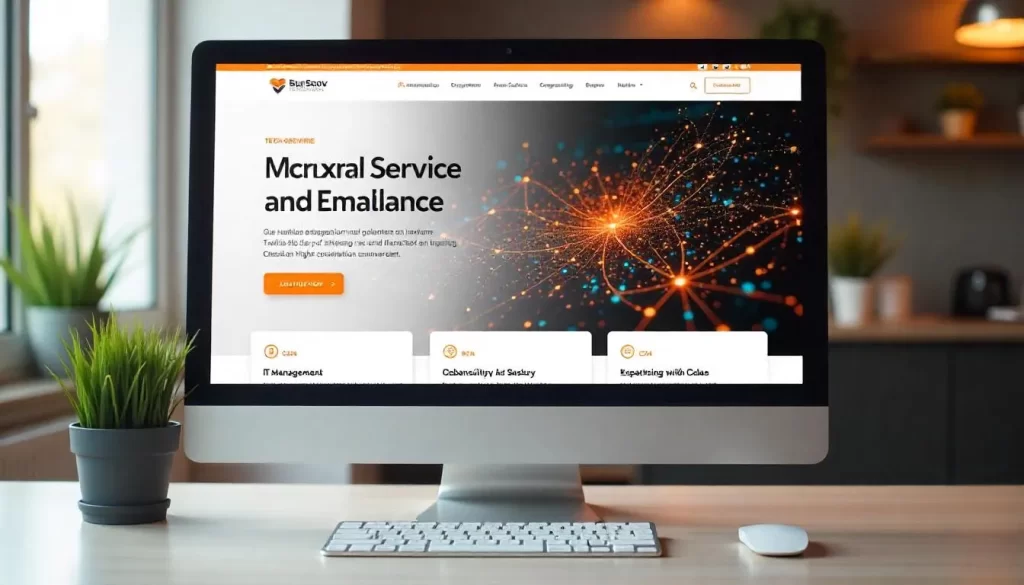The First Impression That Decides Everything
When a prospect lands on your website, they’re not browsing they’re qualifying you. Your MSP website is no longer a digital business card. It’s your primary sales asset. In fact, in more than 70% of new MSP client engagements I’ve been involved in, the website was the deciding factor between being contacted or not.
The way you present your services, your proof, your UX it all signals one thing: Can I trust this company to manage my IT?
Let’s walk through how a well-built MSP website is engineered to turn visits into meetings, and meetings into MRR.

Related Posts
- What Is an MSP and What Do They Do (2025)?
- Key Technologies Shaping the Future of MSP Services (2025)
- Different MSP Models and What They Offer (2025)
The Core Purpose of an MSP Website
Every MSP marketing website should be built with one goal: client acquisition. That doesn’t mean it has to be aggressive or sales. But it does mean your content, design, structure, and performance must be geared toward establishing authority, communicating clearly, and making conversion easy.
I’ve worked with firms that went from “brochure-style” websites to strategic lead engines generating 3x more qualified opportunities in under six months, just by applying better UX and messaging strategies.
What Makes the Best MSP Websites Convert
Clear Service Positioning
One of the biggest mistakes MSPs make? Using vague, technical language. Phrases like “innovative solutions” or “end-to-end support” mean little to a decision-maker under pressure.
The best MSP website design showcases specific services: managed IT, cybersecurity, cloud support, Microsoft 365 administration, and compliance frameworks. It defines who it’s for, and what problem it solves.
Compelling Case Studies and Proof
Social proof turns trust into traction. Website visitors want to see that you’ve solved their kind of problem for their kind of business. That means:
- Real client stories
- Specific outcomes (e.g., “Reduced downtime by 72%”)
- Named testimonials (with permission)
Case studies aren’t optional they’re conversions on paper.
Seamless UX and Page Flow
Clunky navigation, missing CTAs, or scattered messaging will cost you leads. A great MSP web design guides the user through a logical journey:
- Understand what you do
- Believe you’re credible
- Know what to do next
That requires a clean interface, consistent language, intuitive menus, and CTAs placed where users expect them.
Lead Gen Optimized Layouts
The best MSP websites don’t just “look good” they convert. That means:
- Sticky header with CTA
- Offer downloads (e.g., “Top 10 Security Mistakes SMBs Make”)
- Consultation forms that don’t overwhelm
- Chat or chatbot option for quick questions
Even something as simple as adjusting the homepage CTA from “Contact Us” to “Schedule a 15-Min Discovery Call” can double click-throughs.
Content Strategy That Builds Trust
Your website is more than static pages. It’s your chance to build authority and show your team’s expertise before the first call.
Here’s what strong MSP web media and content includes:
- Blogs targeting real business questions, not just tech jargon
- Service pages with business outcomes
- Industry pages that demonstrate vertical experience (e.g., “IT for Law Firms”)
- FAQs that reduce objections before sales calls
- A regularly updated news or insights section to signal activity
Great content isn’t about keywords it’s about clarity and care.
SEO and Technical Performance Matter
Search is still how most potential clients find you or your competitors. If your MSP website isn’t optimized for technical SEO and page speed, you’re invisible.
I’ve seen high-value MSPs with stunning sites that never rank. Why? No schema, bloated images, poor mobile usability, or missing H1 structure.
To win, your site must load fast, be mobile-friendly, and follow SEO best practices—especially if you’re targeting location-specific leads like “MSP in Chicago” or “cybersecurity support for medical clinics.”

Related Posts
- Steps to Selecting the Best MSP for Your Needs (2025)
- Importance of an MSP Website for Client Acquisition (2025)
- Understanding MSP Costs and Pricing Structures (2025)
What Clients Look for (But Won’t Tell You)
They’re thinking:
- Do you “get” my business type?
- Can you fix my problem quickly and correctly?
- Will I feel taken care of?
Your website should answer those questions before they’re asked. That means:
- A human-centered “About” page
- Staff photos and bios
- Real language not just jargon
- A tone that’s confident, not corporate
In a crowded MSP market, your voice can be a dealmaker.
Common MSP Website Mistakes That Kill Leads
From hundreds of audits and redesigns, here’s what I see most often:
- Weak homepages with zero differentiation
- “Contact Us” forms as the only CTA
- No proof (no case studies, reviews, badges, etc.)
- Copy focused on what you do, not why it matters
- Tech-first language instead of client-first messaging
- Outdated visuals and clunky mobile layouts
These mistakes are fixable but you have to know they’re there first.
Key Takeaways
Your MSP website is your silent salesperson. If it doesn’t build trust, explain clearly, and convert visitors it’s costing you opportunities every day. In today’s digital-first landscape, a strategic web presence is not optional. It’s your growth engine.
- Your MSP website should be built to acquire not just inform.
- Clarity in services, proof of results, and seamless UX drive conversions.
- SEO, page speed, and mobile optimization are crucial for visibility.
- Avoid vague language and outdated layouts speak to real business concerns.
- A great website makes it easy for a visitor to say: “Yes, this is who I want.”
FAQs
What should an MSP website include?
Clear service pages, proof (case studies or testimonials), a strong CTA, mobile-friendly design, and trust-building content like blogs or FAQs.
How can I generate leads from my MSP website?
Use CTAs like discovery calls, lead magnets, optimized forms, and live chat. Also, ensure your content speaks to real client problems.
How often should I update my MSP website?
Regularly. At a minimum, your content (blog, service pages) should be updated monthly. Tech trends and SEO requirements evolve fast.
Is it worth investing in professional MSP web design?
Absolutely. Your website isn’t just a brochure it’s a sales machine. A strategic redesign often pays for itself in less than a year via new client acquisition.
